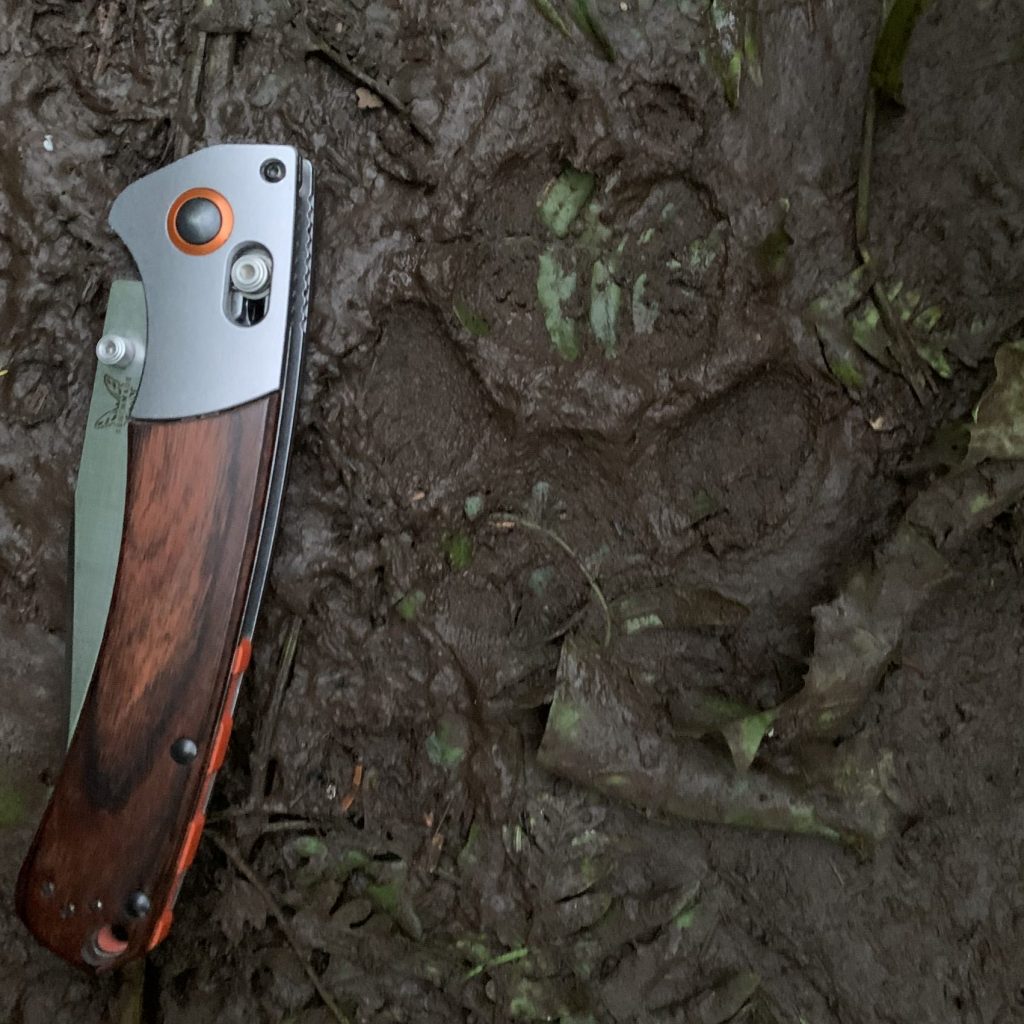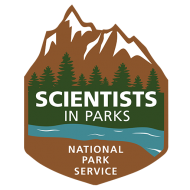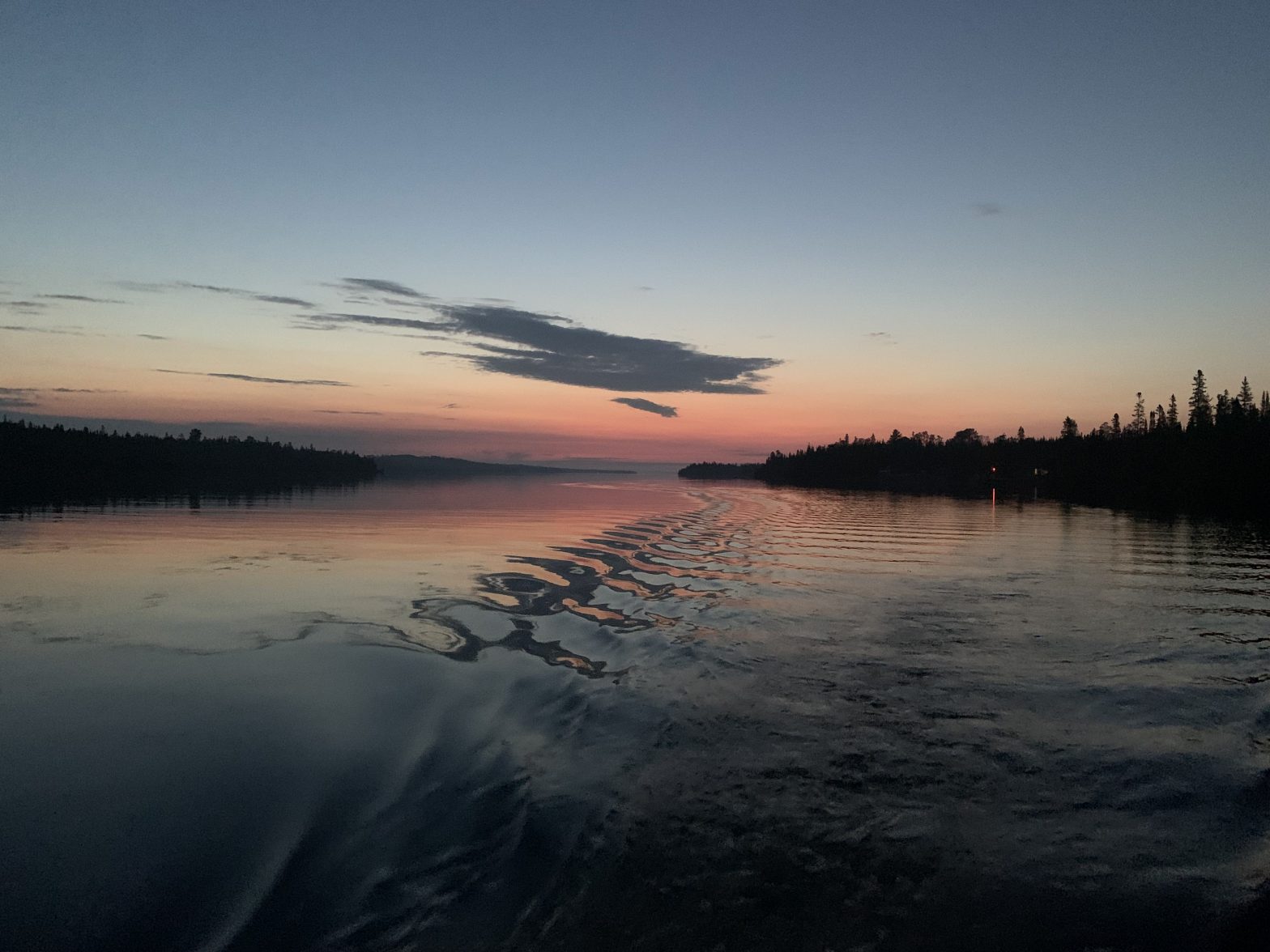BIRD Team Six
We were gliding over the glassy water when the first rosy-fingers of dawn began to color the sky. I was hunched down against the wind whipping across our bow, serving as human ballast. Jared and Scott sat further back and were more sheltered from the cold, but I didn’t mind. Using my weight to balance the boat would clearly be my most significant contribution to the team.
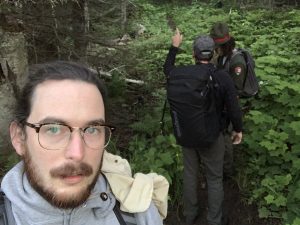
After all, I was finally on Isle Royale, and I was ostensibly there to help the bird surveying team. Jared was our ornithology expert, but he was new to both the island and the survey routes. Scott had spent the last five summers on these trails and—although he initially tried to deny it—was also clearly skilled at identifying bird song. That left me the roles of team photographer, continually impressed audience, and … boat-balancer.
The Mission
After our pre-dawn disembarkment, (boats take on the role of automobiles on Isle Royale) we hit the trail. We would hike briskly for about 250 meters before pausing. Over the next five minutes, Jared would enter some Wuxin-like mental state and slowly piece apart the location and species of each individual bird responsible for the chorus of birdsong surrounding us. Scott would record Jared’s dictations and also voice his own observations. I would stand in awe of their skills, desperately try to hear what they were pointing out, and occasionally crouch down to look at some cool bugs I spotted.
By hiking the same trails year-after-year and recording the birdsong at the same points, we can get an idea of what’s happening to the bird community of Isle Royale. Also, these transects were designed to go through some very different ecosystems. On the island, there are dense hardwood forests, wet marshes, rocky meadows, and conifer groves all sitting side-by-side. In fact, we passed through all of these on our relatively short, four-hour hike. Hopefully, I will be able to leverage the data we collected here to understand how these different habitats inform bird nesting sites.
Ecosystem engineers
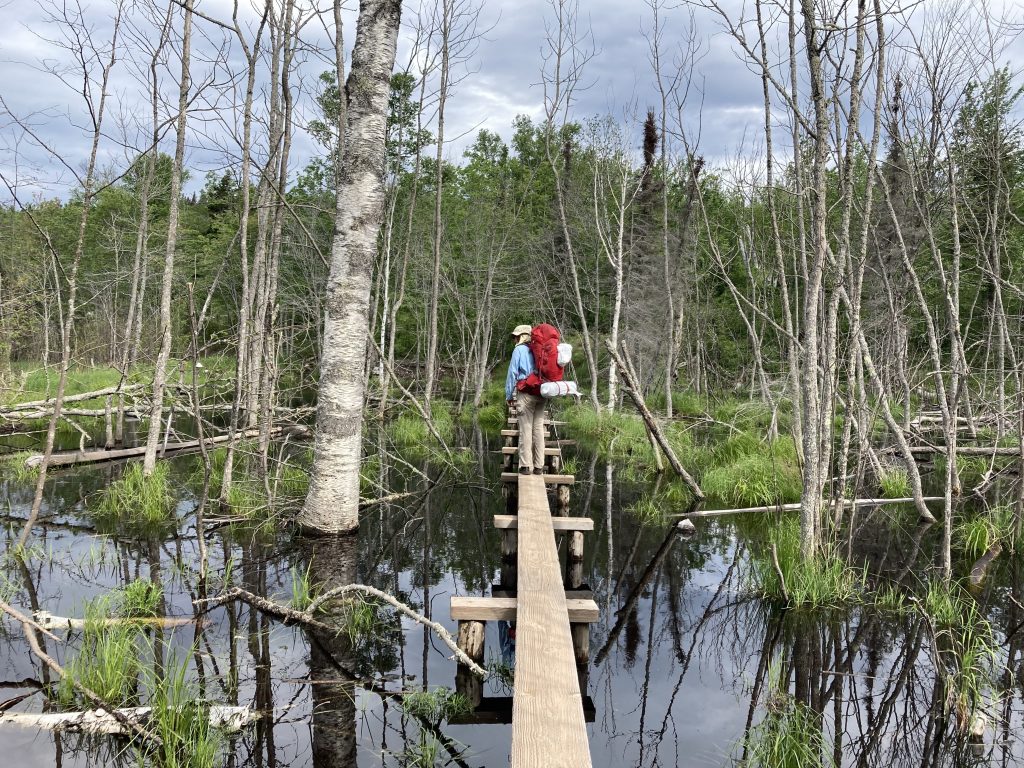
But these habitats were clearly not permanent, immutable aspects of the island. Along our survey, it became obvious that there were two culprits rearranging the landscape: moose and beavers. Whole clearings of young trees were sliced across at a precise five foot height, as if shorn by some giant, heavenly weed-whacker. Moose can be very thorough diners, it would seem.
Even more obvious were the beavers. Each dam would massively change the landscape. In fact, some of the trails we needed to cross had recently disappeared under rising water. In less than a year, two adult beavers had turned a trickling, half-pace-wide stream into something that resembled a lake. Pointy, rodent-chewed stumps dotted every wetland we walked through.
How do the birds react to such “ecosystem engineering”? I’ve decided, if I have enough time, to try and include the beaver population in my statistical model alongside moose. Both of these mammals seem to be altering habitats, and it will be important to understand how birds react to the change. Plus, as the wolf population increases at the expensive of these herbivores, we will be able to make predictions of future bird communities!
Bonus wolf print photo:
